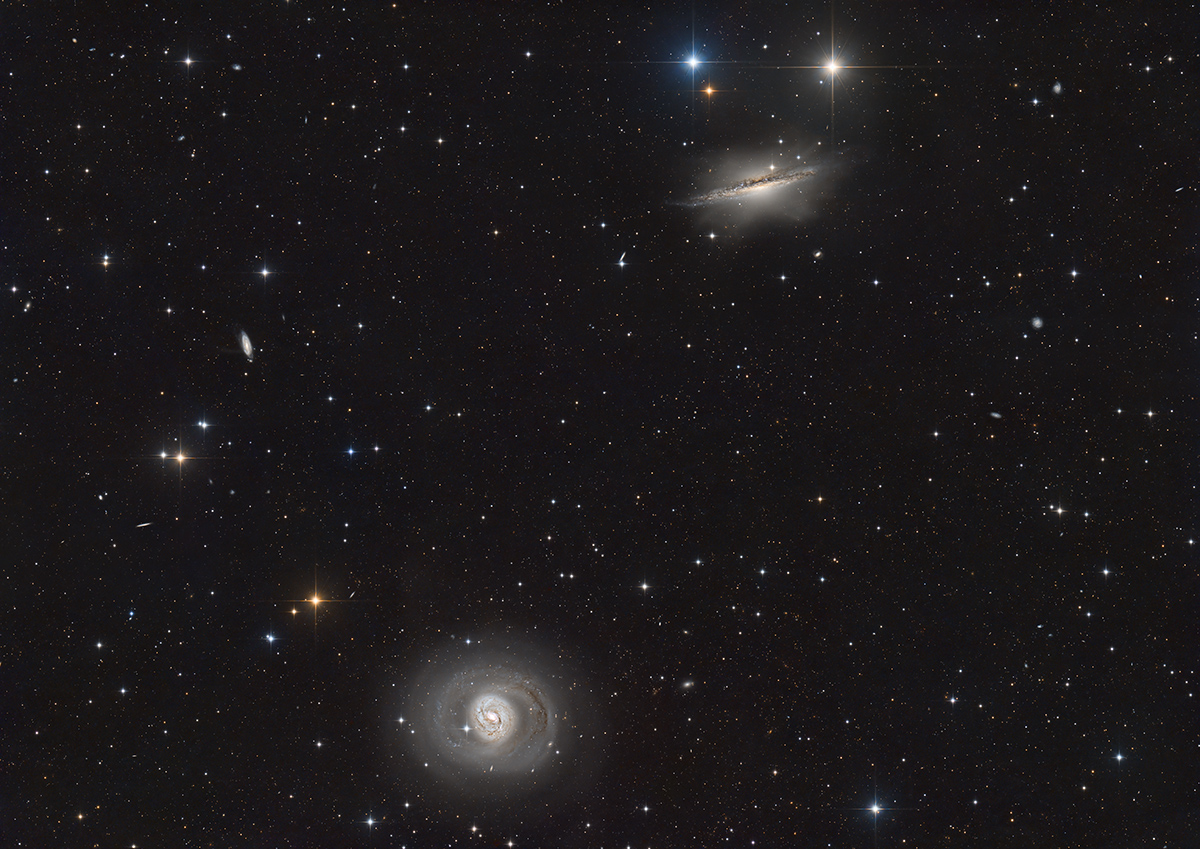
[back] M77 with NGC 1055 and NGC 1072 in Cetus[NED]
Higher resolved image /
höher aufgelöstes Bild (5570 x 3942 pixel)

|
(c) 2024 All astro photo images are copyrighted. They may not be used or reproduced without explicit written permission from the authors. |
|
300" |
|
About this Image / Über dieses Bild
|
CCD: |
Omegon veTEC410c |
|
Image Type, Orientation: |
RGB Composite. North is at 12:00. |
|
Exposure time: |
61x300 sec. 1x1 bin (5:05h total) |
|
Exposure date: |
October 13th,14th, 2023 |
|
Location: |
Skinakas Observatory at Crete, Greece, remote-controlled from Bad Arolsen/Germany |
|
Filter: |
RGB: Internal Bayer-Matrix |
|
Instrument: |
Ganymed 60cm-Hypergraph in primary focus (f=1815.9 mm) |
|
Final Image Seeing (FWHM): |
1.3" |
|
Photographer: |
Josef Pöpsel, Frank Sackenheim, Stefan Binnewies |
|
Remarks: |
These galaxies
are located in the constellation of Cetus, not far from the star Delta Ceti,
and are presumably gravitationally bound (M77 group). It is probably the
gravitational influence of the neighboring galaxy that causes NGC 1055 to
have a strange X-shaped form. |
|
Bemerkungen: |
Diese Galaxien befinden sich im
Sternbild Walfisch, unweit des Sterns Delta Ceti und sind vermutlich
gravitativ gebunden (M77 Gruppe). Vermutlich ist es der gravitative Einfluss
der Nachbargalaxie, die bei NGC 1055 eine seltsame X-förmige Form
verursacht. |
Back to the Galaxies' Overview / Zurück zur Galaxien-Übersichtsseite